The best phone for video recording and vlogging in 2022
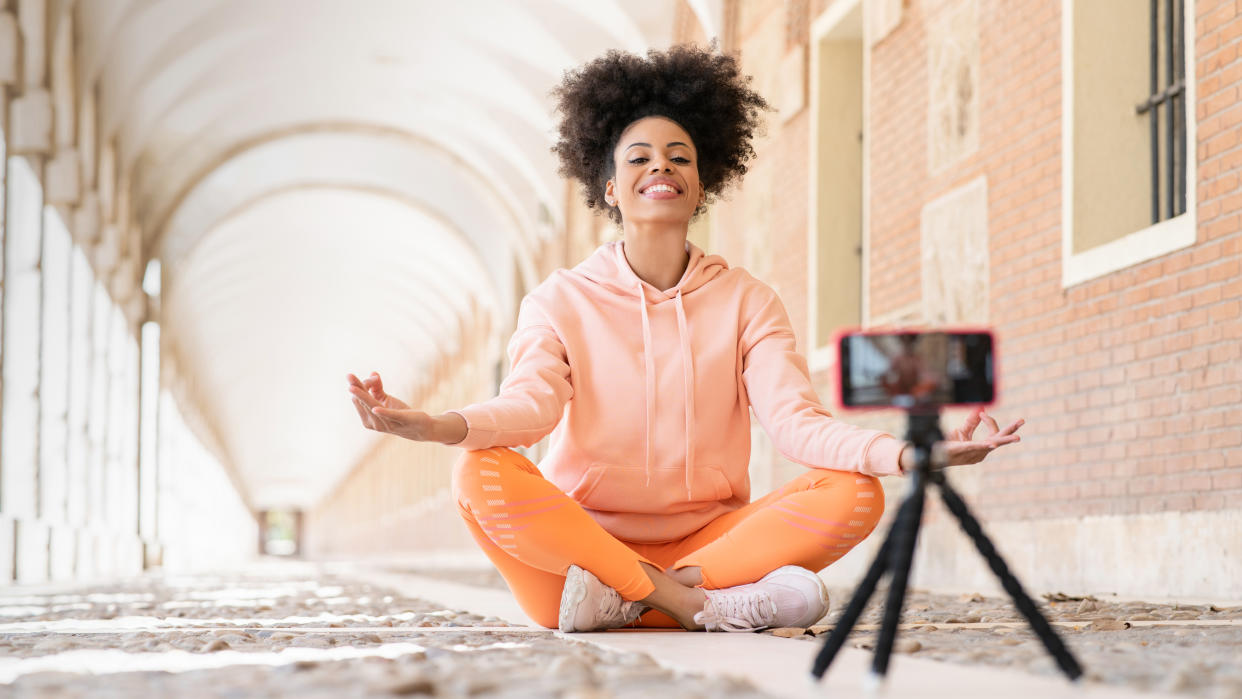
What's the best phone for video recording? It's a question more and more people are asking, as social media becomes increasingly dominated by video. As TikTok grows in importance, and Facebook and Instagram put more and more emphasis on video in retaliation, you need to know which phone will help you capture the best quality footage, right out of the box.
You might think that the best camera phone for stills would automatically be the best phone for video too, but that's not necessarily the case. Because great video doesn't just mean having a great lens: it also means having a lot of computational power and smart software to produce a good-looking finished product.
Other phone guides
Best camera phones
Best budget phones
Best iPhones for photography
Best burner phones
For many years, Apple has led the way in delivering cutting edge, high-quality video recording capabilities. But more recently Samsung, Oppo and others have placed more emphasis on video, closing the gap significantly.
So what's the best phone for video, right now? Read on, as we reveal our choices, and what makes them so good for recording and streaming video.
Best phone for video recording in 2022
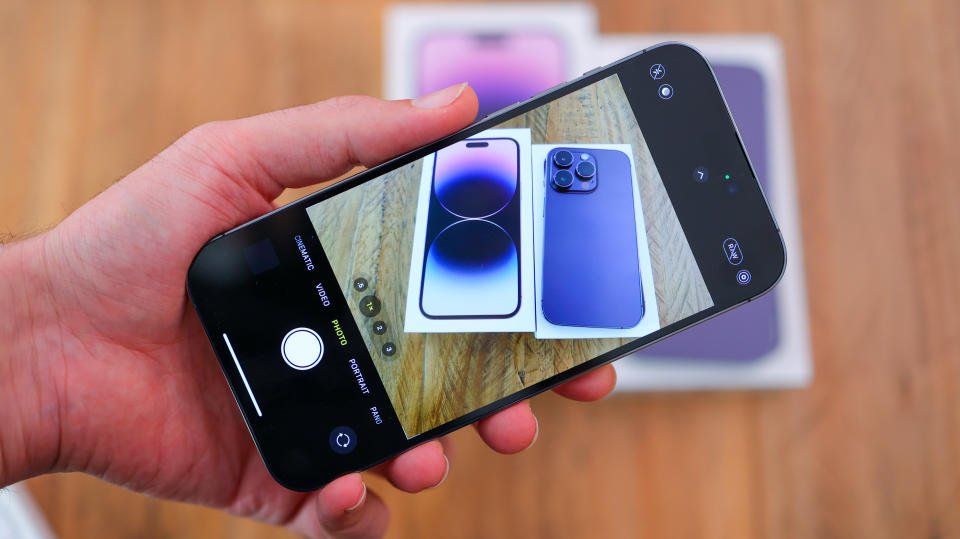
1. iPhone 14 Pro Max
The best phone for video recording overall
Release date: September 2022 | Cameras: 48 MP, 24mm (f/1.8), 12 MP, 77mm (f/2.8), 12 MP, 13mm, (f/2.2), TOF 3D LiDAR scanner | Front video: 4K/60fps | Rear video: 4K/60fps | OIS: Yes | Weight: 240g | Dimensions: 160.7 x 77.6 x 7.9mm | RAM: 6GB | Storage: 128GB-1TB | Battery: 4,323mAh
Brilliant cameras
Incredible stablization
Great in low light
Expensive
Since the launch of the iPhone 5S, Apple’s flagship phones have been a consistently popular choice for filmmakers. Each generation has built on the success of the last and the iPhone 14 series is the best yet. Not only do you get 4K resolution, 60fps and 10-bit HDR video capture as you did with the 13s, you now get a wider ISO range for better low-light capture and a new Action Mode that does an amazing job as image stabilization, whether or not you use a gimbal. For anyone who's had issues with shaky footage in the past, this is a true game changer.
A more general benefit of choosing an iPhone is that third party manufacturers prioritize making accessories specifically for them. Plus, because iOS is a single platform, apps like Instagram and TikTok are optimized primarily for it, which generally leads to fewer issues with compression ruining the quality of the content you upload. For more information, read our iPhone 14 Pro Max review.
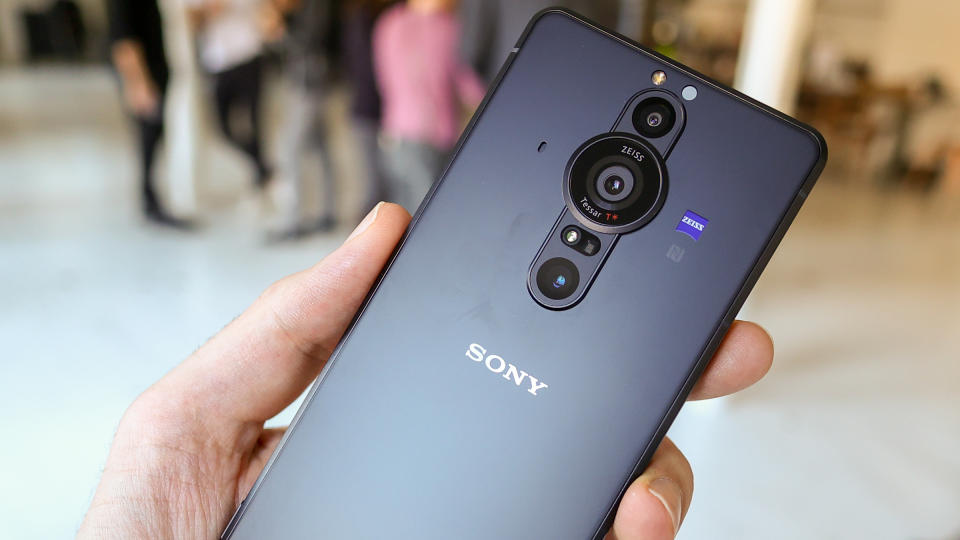
2. Sony Xperia Pro I
The most thoughtfully designed phone for video recording
Release date: December 2021 | Cameras: 12MP 50mm (f/2.4), 12MP 1-inch 24mm (f/2-4), 12MP 16mm (f/2.2) | Front video: 1080p/30fps | Rear video: 4K/120fps | OIS: Yes | Weight: 211g | Dimensions: 166 x 72 x 8.9mm | RAM: 12GB | Storage: 512GB + microSDXC (up to 1TB) | Battery: 4,500mAh
Thoughtful design
Expandable storage
Dedicated physical camera buttons
Not best for point-and-shoot
In a world where phones are so samey, the Sony Xperia Pro-I goes its own way. It has a boxy form factor, with a 6.5-inch 21:9 4K HDR OLED display, one of the sharpest available on any smartphone right now. It also has a dedicated button for opening the camera app and another right beside it for opening one of its three video recording modes.
And there's more. The Xperia Pro-I has a 3.5mm headphone jack and expandable memory via microSDXC support up to 1TB; two things no other major flagship offers right now. When it’s time to record video, the Sony Xperia Pro-I offers full manual controls, optical image stabilization, subject tracking and eye autofocus and a physical aperture that switches the lens from f2 to f4. Videography Pro mode allows you to control every aspect of exposure and focusing, even allowing you to make cinematic manual focus pulls.
Sony says it designed this smartphone’s video UI around the same menus and functions it deploys in its pro camera bodies, so it will feel familiar to Sony shooters in particular. However, that also means that the wealth of settings, cinema picture profiles and controls may feel daunting to the uninitiated.
Sony has also produced some interesting accessories for this device that allow you to add a vlogging monitor via USB-C and a Bluetooth remote grip with physical controls. This combo allows you to plug in a microphone and use the main rear camera for vlogging. And if you have a Sony mirrorless camera, you can also use the Xperia Pro-I as an external 4K HDR monitor. For more details, see our Sony Xperia Pro I review.
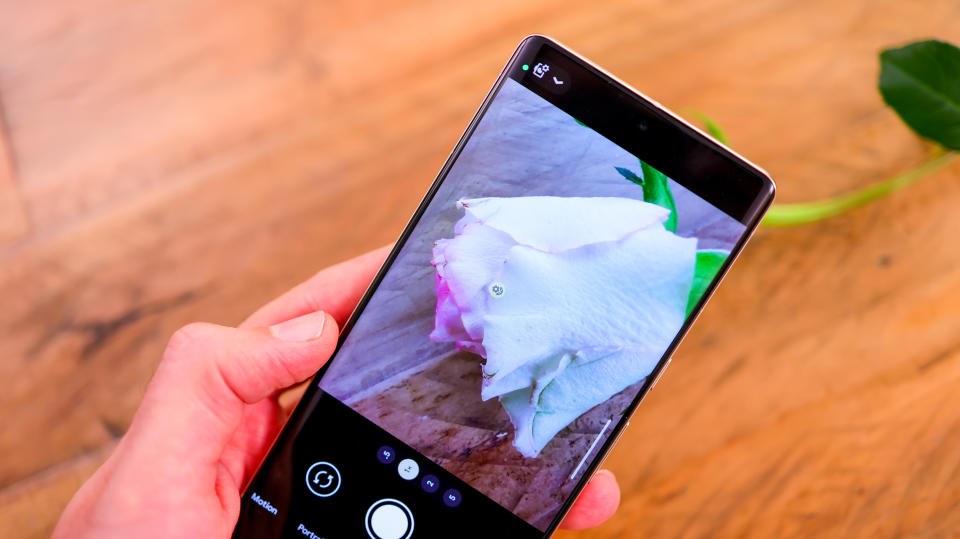
3. Google Pixel 7 Pro
The smartest Pixel camera yet
Release date: October 2022 | Cameras: 50 MP, 25mm (f/1.9), 48 MP, 120mm (f/3.5), 12 MP, 126˚ (f/2.2) | Front video: 4K/60fps | Rear video: 4K/60fps | OIS: Yes | Weight: 212g | Dimensions: 162.9 x 76.6 x 8.9mm | RAM: 8-12GB | Storage: 128/256/512GB | Battery: 5000mAh
4K/60fps from both front & back
Great image stabilization
Low noise
Slower charging than rivals
Pixel devices have been very innovative when it comes to video capture and the Pixel 7 Pro is the company’s best yet. Highlights in this area include a new Cinematic video mode introduced to bring the line up to speed with the iPhone 14 Pro and Samsung Galaxy S22. This blurs out the background, kind of like a portrait mode but for videos not stills. There's also enhanced electronic image stabilization, using computational photography to sharpen shots. Plus all three cameras on the Pixel 7 Pro support recording in 4K up to 60fps. For more details, see our Google Pixel 7 Pro review.
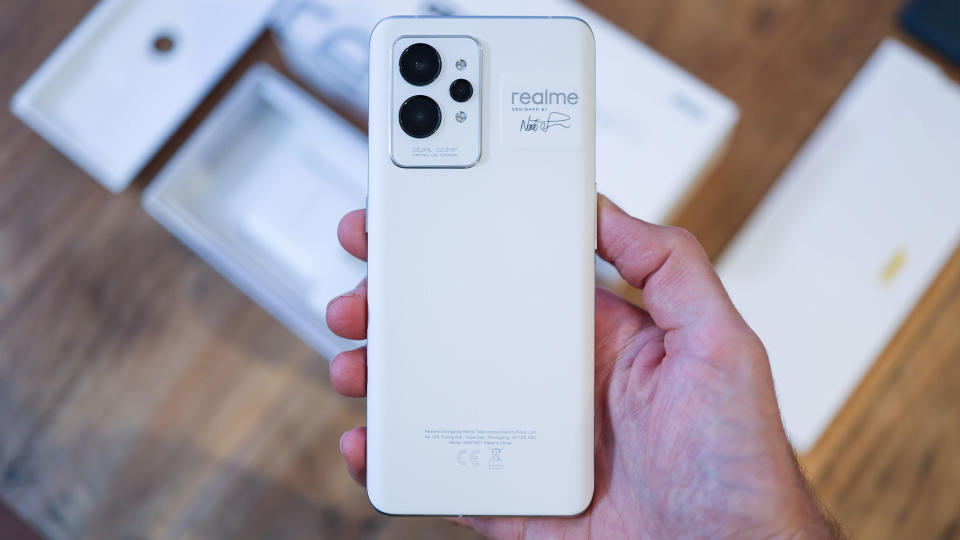
4. Realme GT 2 Pro
Great value for money choice
Release date: January 2022 | Cameras: 50MP 1/1.56” 24mm (f/1.8), 50MP 15mm (f/2.2), 3MP Microscope camera (f/3.3) | Front video: FullHD/30p (f/2.4) | Rear video: 8K/24p | OIS: Yes | Weight: 199g | Dimensions: 163.2 x 74.7 x 8.2mm | RAM: 8/12GB | Storage: 128/256/512GB | Battery: 5000mAh
Impressive camera hardware
Powered by Snapdragon 8 Gen 1
Impressive image stabilization
Great value for money
Autofocus unstable
Strong exposure fluctuations
No telephoto lens or optical zoom
Challenger brand Realme has climbed the ranks quickly to become one of the best kept secrets in the Android phone world. By selecting some top hardware for its camera unit and maximizing the benefits of the Snapdragon 8 Gen 1 chipset, Realme has ensured that the GT 2 Pro is one of the most competitive smartphones for photography and video currently on the market.
The Sony IMX766 sensor at the heart of the Realme GT 2 Pro is a proven winner, it’s the same unit in the Oppo Find X5 Pro. This device also shares the same impressive 150° ultra-wide camera as the OnePlus 10 Pro. With quality hardware at its disposal, the Realme GT 2 Pro can produce excellent video in good light. Although, relying on its infant AI scene enhancement mode, it has a slight tendency to over saturate and occasionally, wildly over or underexpose whenever it’s unsure what the subject of a scene is. These types of errors can be corrected via updates, so we hope this is something that will be improved.
The Realme GT 2 Pro has a dedicated Movie mode, that features a horizontal UI and allows you to take control of manual settings, which will negate deficiencies in its auto exposure performance. It also gives you the choice to shoot in its own version of a flat log profile or in an HDR mode that increases vibrancy and dynamic range automatically. When recording in Movie mode, the Realme GT 2 Pro outputs a 4K file in a cinematic 21:9 aspect ratio. You can also record 720p video using the device’s unique - some may say - gimmicky microscope camera, with audio. It might have very limited use cases, but it’s a fun addition.
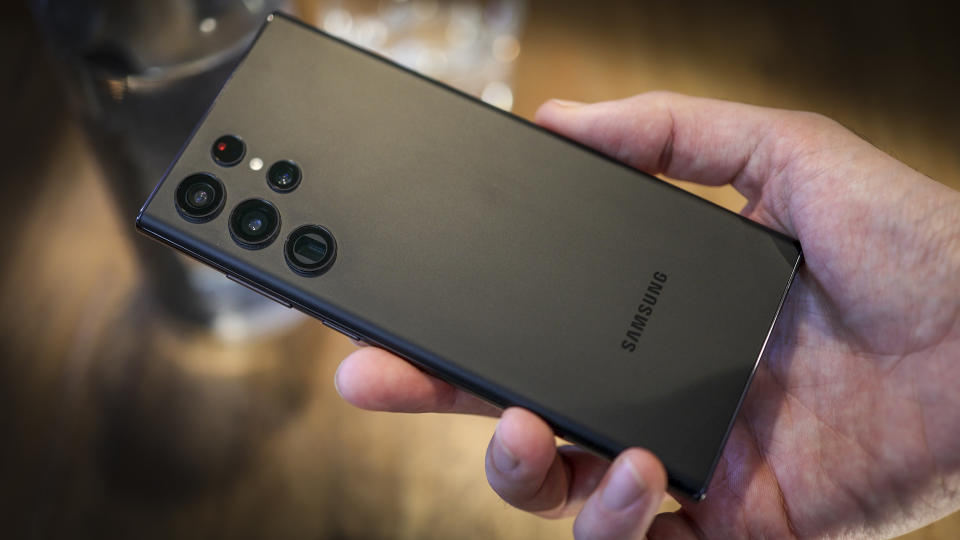
5. Samsung Galaxy S22 Ultra
One of the zoom kings of the smartphone world
Release date: February 2022 | Cameras: 108MP 1/1.33” 23mm (f/1.8),10MP 1/3.52” 230mm Periscope (f/4.9), 10MP 1/3.52” 70mm (f/2.4), 12MP 1/2.55” 13mm 120° ultra-wide (f/2.2) | Front video: 4K/30p (f/2) | Rear video: 8K/24p | OIS: Yes | Weight: 228g | Dimensions: 163.3 x 77.9 x 8.9mm | RAM: 8/12GB | Storage: 128/256/512GB/1TB | Battery: 5000mAh
Super high-definition 8K video
Innovative video functionality
Large battery
10x Optical Zoom
Remote control via S-Pen
No microSD card slot
The S21 Galaxy Ultra is still attractive
Samsung’s Galaxy S-series phones have received a significant bump in video-recording capabilities since the launch of the Galaxy S9 Plus. Since that benchmark release, Samsung has consistently delivered year-on-year improvements to both photography and video recording, making Samsung flagship devices a go-to choice for content creators.
The Galaxy S22 Ultra has some eye-catching headline specs, including 8K video-recording at up to 30fps, 10x zoom and 480fps Full HD slow-motion capture. It also has a quirky mode called “Director’s View”, which is only available when you use the dedicated Samsung Galaxy camera app. Director’s view is aimed at vloggers and YouTubers, and it enables you to record video from all of the device’s cameras at once. It’s not a tool that will appeal to everyone, but it could be great for filming something taking place, while capturing your reactions and commentary.
Video from the S22 Ultra is punchy, crisp and stable, thanks to its optical image stabilisation system. It also has a large battery, which is ideal for those of us who want to stay connected and enjoy heavy camera use. But that being said, the Samsung Galaxy S21 Ultra seems to be able to squeeze just under an hour more out of its 5,000 mAh battery. It also still holds its own when it comes to video and camera performance. If you’re on a budget, maybe Samsung’s previous flagship is worth considering too.
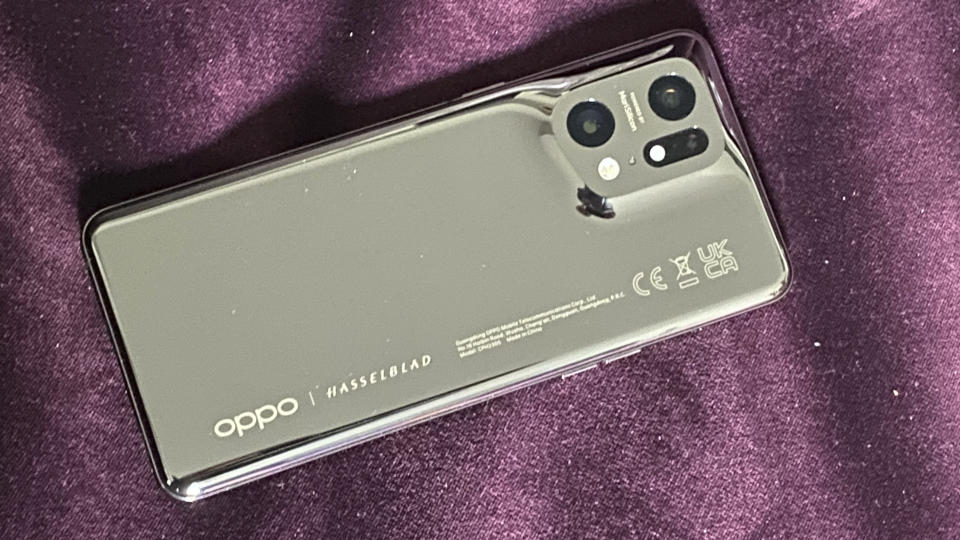
6. Oppo Find X5 Pro
Powered by its bespoke MariSilicon X neural processing unit
Release date: March 2021 | Cameras: Main camera 50MP (f/1.7), telephoto 13MP (f/2.4), ultra-wide 50MP (f/2.2) | Front video: FullHD/30p | Rear video: 8K/30p | OIS: Yes | Weight: 195g | Dimensions: 163.7 x 73.9 x 8.5mm | RAM: 8/12GB | Storage: 256/512GB | Battery: 5,000 mAh
Premium design
Consistently impressive main camera
Limited zoom
The Oppo Find X5 Pro’s camera is built around the 50MP Sony IMX766 camera and its proprietary MariSilicon X chip, which is designed to deliver greater levels of picture detail, color depth and low noise.
The main camera is capable of recording up to 4K/60p video and FullHD video at an impressive 240fps, for those of you who are interested in capturing slow motion content. Its front-facing, or selfie camera is limited to only FullHD/30p. Oppo has identified night time video recording as one area where most smartphones typically let people down. With that in focus, Oppo has created an advanced noise reduction algorithm to eliminate grainy footage. It works by using artificial intelligence to scan each frame for and reduce image noise in low-light videos, pixel by pixel. The advantage of taking this approach is that the phone cleverly manages to deliver cleaner 4K footage in low light, without heavily destroying details and compromising color accuracy.
The autofocusing and auto-exposure of the Oppo Find X5 Pro is another area where its neural processing unit performs well. The Find X5 Pro detects subjects, including faces quickly and adjusts the exposure to deliver a pleasing look, depending on what it thinks you’re filming. The only major set back here is the device’s humble telephoto capability, which taps out at limiting 2x optical zoom.
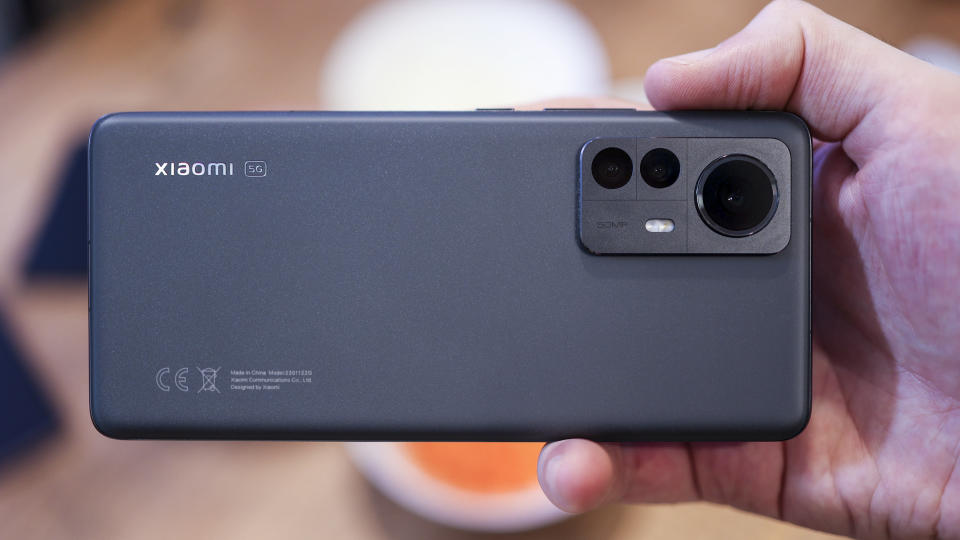
7. Xiaomi 12 Pro
Great detail and colors in most lighting conditions
Release date: January 2022 | Lenses: 1/1.28” 50MP (f/1.9), 1/2.76” 48mm telephoto 50MP (f/1.9), 1/2.76” 15mm ultra-wide 50MP (f/2.2) | Front video: FullHD/60p | Main video: 8K/24p | OIS: Yes | Weight: 204g | Dimensions: 163.6 x 74.6 x 8.2mm | RAM: 8/12GB | Storage: 128/256GB
Large sensor in main camera
Good value for money
8K/24p video
Great image stabilization
Mid-range sensors in telephoto and wide cameras
Only 2x optical zoom
Not on sale in USA
Sporting a triple 50MP camera setup, the Xiaomi 12 Pro’s main camera is built around the Sony IMX707 sensor. While it’s not the largest sensor in the camera world, measuring 1/1.28-inches, it’s one of the biggest. It even has more light-gathering surface area than the ever popular Samsung Galaxy S22 Ultra’s main camera.
Both its main and telephoto cameras use f/1.9 lenses, paired with its relatively large sensor, this helps the Xiaomi 12 Pro to produce rich footage in daylight and natural, detailed footage in low light. Although the detail falls apart when not using the main camera in low light. Its ultra-wide camera offers a 115° field of view, suitable for cityscape style vistas. But again, the quality doesn’t keep up with its main camera, even in good light.
There are some decent movie-making modes within the 12 Pro’s camera app, including VLOG. This shooting mode gives users a selection of vlogging templates. Selecting one allows you to create quick and easy landscape videos from captured clips in a range of styles, with edits, effects and transitions built-into a precomposed timeline.
All things considered, the Xiaomi 12 Pro does a brilliant job with video, particularly in good light. It’s one of only a handful of phones to make use of the Snapdragon 8 Gen 1 chipset’s 8K-video capabilities. It also churns out attractive 4K/60p footage and has effective image stabilization for smooth shots when filming handheld or steady walking.
Read more
Best camera phones
Best ring lights
Best wireless chargers
Best power banks for iPhone
Best tripods for iPhones and smartphones

